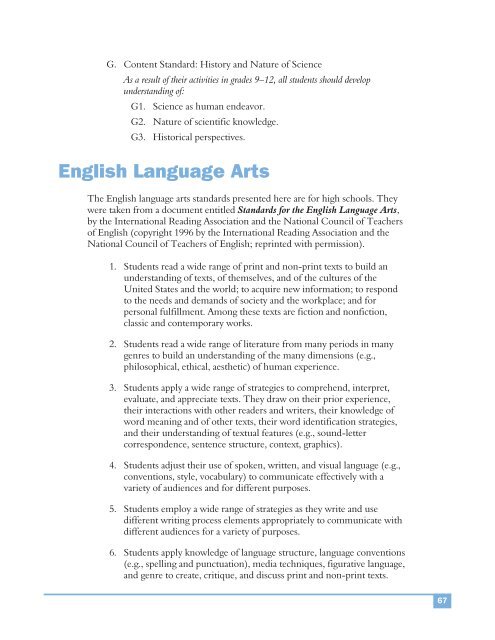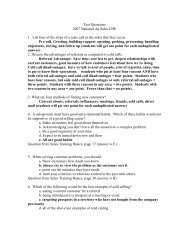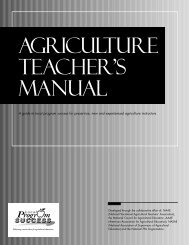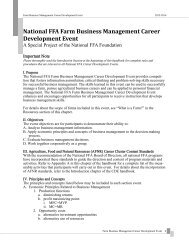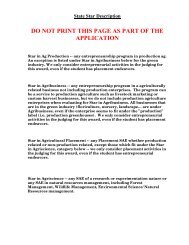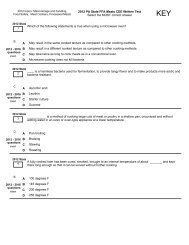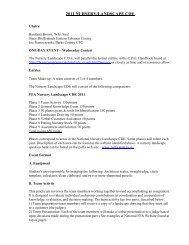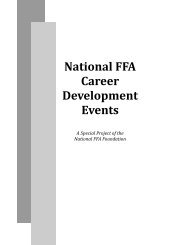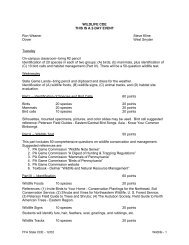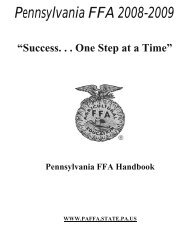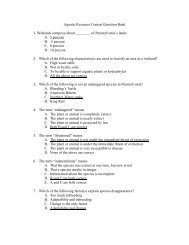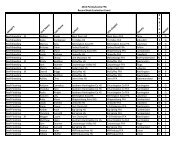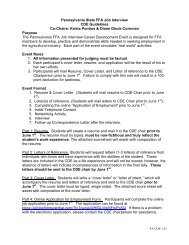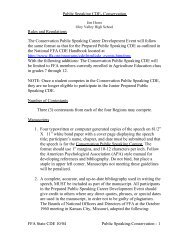AFNR Standards - National FFA Organization
AFNR Standards - National FFA Organization
AFNR Standards - National FFA Organization
Create successful ePaper yourself
Turn your PDF publications into a flip-book with our unique Google optimized e-Paper software.
G. Content Standard: History and Nature of ScienceAs a result of their activities in grades 9–12, all students should developunderstanding of:G1. Science as human endeavor.G2. Nature of scientific knowledge.G3. Historical perspectives.English Language ArtsThe English language arts standards presented here are for high schools. Theywere taken from a document entitled <strong>Standards</strong> for the English Language Arts,by the International Reading Association and the <strong>National</strong> Council of Teachersof English (copyright 1996 by the International Reading Association and the<strong>National</strong> Council of Teachers of English; reprinted with permission).1. Students read a wide range of print and non-print texts to build anunderstanding of texts, of themselves, and of the cultures of theUnited States and the world; to acquire new information; to respondto the needs and demands of society and the workplace; and forpersonal fulfillment. Among these texts are fiction and nonfiction,classic and contemporary works.2. Students read a wide range of literature from many periods in manygenres to build an understanding of the many dimensions (e.g.,philosophical, ethical, aesthetic) of human experience.3. Students apply a wide range of strategies to comprehend, interpret,evaluate, and appreciate texts. They draw on their prior experience,their interactions with other readers and writers, their knowledge ofword meaning and of other texts, their word identification strategies,and their understanding of textual features (e.g., sound-lettercorrespondence, sentence structure, context, graphics).4. Students adjust their use of spoken, written, and visual language (e.g.,conventions, style, vocabulary) to communicate effectively with avariety of audiences and for different purposes.5. Students employ a wide range of strategies as they write and usedifferent writing process elements appropriately to communicate withdifferent audiences for a variety of purposes.6. Students apply knowledge of language structure, language conventions(e.g., spelling and punctuation), media techniques, figurative language,and genre to create, critique, and discuss print and non-print texts.67


